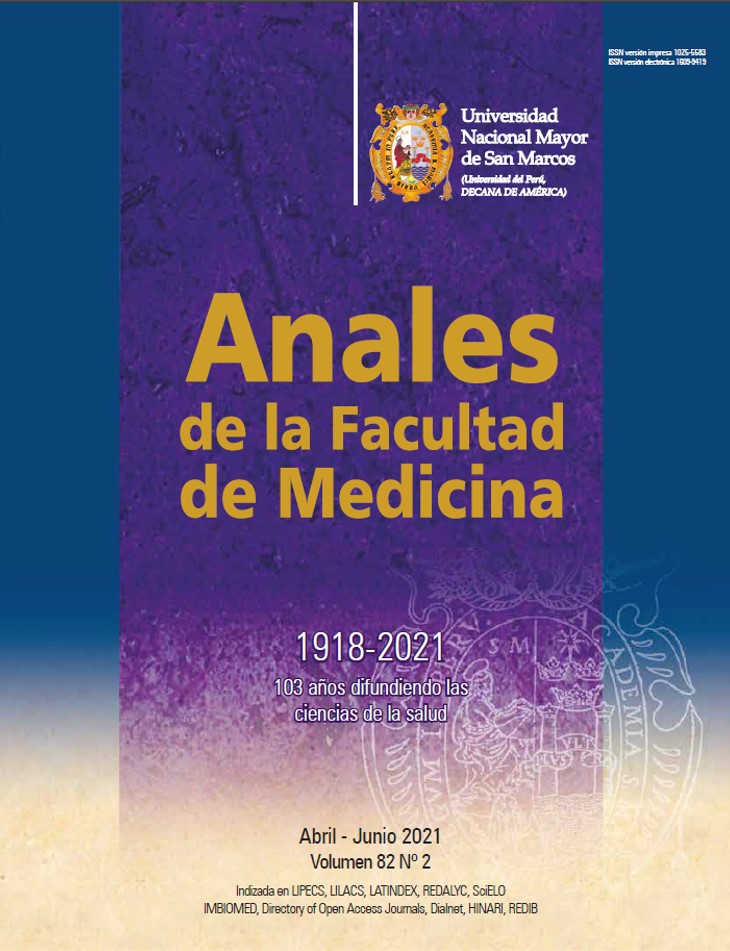Follow-up of patients with diabetic foot in a highly complex hospital in northern Peru
DOI:
https://doi.org/10.15381/anales.v82i2.20103Keywords:
Diabetic Foot, Prospective Study, Diabetes Mellitus, Type 2, PeruAbstract
Introduction. Diabetic foot is a frequent complication of diabetes. Data are scarce in northern Peru. Objective. To describe the clinical evolution of the diabetic foot in a hospital in Lambayeque-Peru, between 2018 and 2019. Methods. Descriptive, prospective study. The patients were recruited by emergency/consultation and followed by the diabetic foot unit through daily visits and dressings. Results. Follow-up from August 2018 to October 2019. There were 136 patients; median age: 63 years (IQR = 54-86) and 50.38% were men. The median number of years with diabetes and hospitalization time was 10 years and 10 days; 40% and 21% had trauma and previous amputation. The frequencies of high blood pressure, diabetic nephropathy, chronic kidney disease, previous acute coronary syndrome and cerebrovascular event were: 52.9%, 26.4%, 33.3%, 2.9% and 16.6%, respectively; 50.7% had involvement of the right foot, 58.1% of the left and 8.6% of both. The most frequent initial Wagner was IV: 30.16%, followed by II: 25.40% and the most frequent final was IV: 42.15% followed by II: 22.31%. 41.22% were amputated, mayor amputations: 28.24% and minor amputations 11.8%; 25.6% were supracondylar; 39.6% had sepsis, 38.58% unfavorable evolution and 9.44% died. In amputees, the median number of days before amputation was 12. Conclusions. the frequency of amputation and mortality was higher than in previous studies. There was a high frequency of unfavorable evolution: mputation/death or worsening of gangrene.
Downloads
Published
Issue
Section
License
Copyright (c) 2021 Anales de la Facultad de Medicina

This work is licensed under a Creative Commons Attribution-NonCommercial-ShareAlike 4.0 International License.
Those authors who have publications with this magazine accept the following terms:
- Authors will retain their copyrights and guarantee the journal the right of first publication of their work, which will be simultaneously subject to Creative Commons Attribution License that allows third parties to share the work as long as its author and its first publication this magazine are indicated.
- Authors may adopt other non-exclusive licensing agreements for the distribution of the version of the published work (eg, deposit it in an institutional electronic file or publish it in a monographic volume) provided that the initial publication in this magazine is indicated.
- Authors are allowed and recommended to disseminate their work over the Internet (eg: in institutional telematic archives or on their website) before and during the submission process, which It can produce interesting exchanges and increase quotes from the published work. (See El efecto del acceso abierto ).



